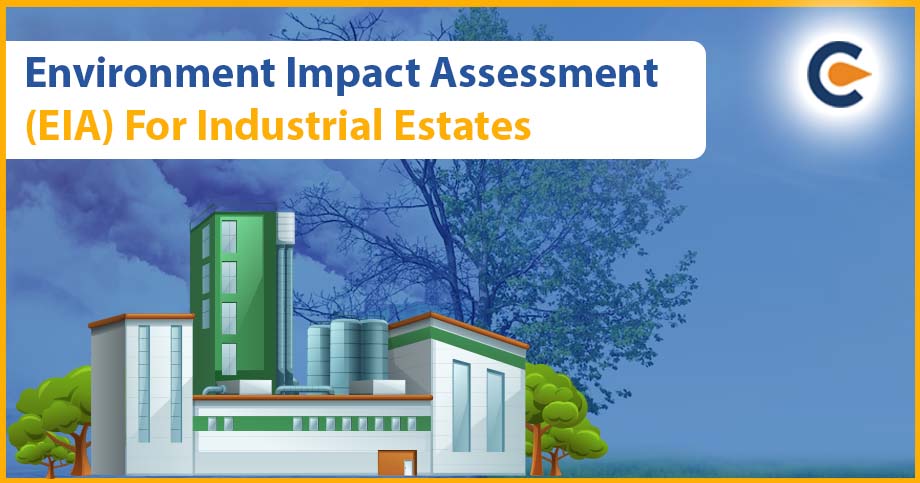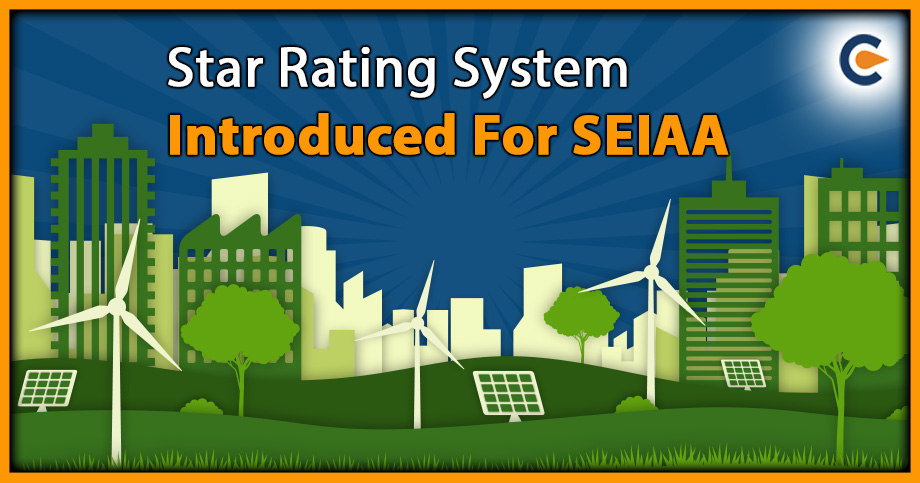Project appraisal evaluates a proposed project to determine its feasibility, potential risks, benefits, costs, and overall impact. The appraisal process is typically conducted before the approval and implementation of a project, and it involves a thorough analysis of various factors related to the project. The Project appraisal in severely polluted areas involves a comprehensive assessment of the pollution levels in the area, identifying potential risks and developing effective mitigation measures, engaging with stakeholders, and making a decision based on the overall analysis. The outcomes can provide valuable insights into the feasibility and potential impact of proposed projects, which can help decision-makers make informed choices about whether to proceed with a project and how best to design and implement it.
Regulations Governing Project Appraisal for Environment Clearance
In India, the regulations governing project appraisal in severely polluted areas are primarily governed by the Environmental Impact Assessment (EIA) Notification, 2006, and subsequent amendments. The EIA Notification, 2006[1], requires that all projects likely to significantly impact the environment, including those in severely polluted areas, undergo a comprehensive appraisal process before being approved. In addition to the EIA Notification, 2006, other regulations, such as the Water (Prevention and Control of Pollution) Act, 1974, the Air (Prevention and Control of Pollution) Act, 1981, and the Forest (Conservation) Act, 1980, also govern in severely polluted areas in India. These regulations provide additional guidelines and requirements, environmental clearance, and monitoring in severely polluted areas.
Requirement for Project Appraisal in Severely Polluted Areas
The EIA Notification, 2006, outlines the following requirements in severely polluted areas:
- Comprehensive Environmental Impact Assessment (EIA) Study: A comprehensive EIA study must be conducted for all projects in severely polluted areas to assess the potential environmental impact of the proposed project.
- Public Consultation: Public consultation must be conducted as part of the EIA study process to gather the views and concerns of stakeholders, including local communities and environmental groups.
- Clearance from The State Pollution Control Board (SPCB): Projects in severely polluted areas must obtain clearance from the State Pollution Control Board (SPCB) before approval.
- Timeframe for Appraisal: The EIA Notification, 2006, specifies a timeframe of 60 days for the appraisal of projects in severely polluted areas. The appraisal process must be completed within this timeframe to ensure timely decision-making.
- Post-Clearance Monitoring: Projects in severely polluted areas must be monitored after clearance to ensure that they comply with the conditions specified in the clearance and do not cause harm to the environment.
Documents Required For Project Appraisal in Severely Polluted Areas
The documents required are:
- Project Proposal: A detailed project proposal that includes the project’s scope, objectives, and expected outcomes.
- Environmental Impact Assessment Report: An environmental impact assessment (EIA) report that evaluates the project’s potential impact on the environment and public health. The report should include an evaluation of air, water, and soil quality and the presence of hazardous waste and pollutants.
- Environmental Management Plan (EMP): The EMP should include details on the methods to reduce emissions and waste generation, measures to control pollution, and plans for monitoring and reporting on environmental performance.
- Health Impact Assessment Report (HIA): HIA report should include an assessment of potential health risks associated with exposure to pollutants, including noise and vibration, and measures to minimize those risks.
- Technical Feasibility Report: A technical feasibility report that evaluates the project’s technical requirements, including the suitability and availability of technology and equipment.
- Financial Viability Report: An economic viability report that evaluates the project’s financial feasibility. The report should include an analysis of costs and benefits, return on investment, and potential financial risks and uncertainties associated with the project.
- Stakeholder Consultation Report: A stakeholder consultation report summarising the engagement with local communities, environmental groups, and other stakeholders, including their concerns and feedback.
Process of Project Appraisal in Severely Polluted Areas
The process in severely polluted areas involves additional scrutiny and evaluation compared to other areas. The following are the steps of the appraisal process in severely polluted areas:
- Identify The Pollution Levels: The first step is to identify the pollution levels in the area where the project is proposed. This includes assessing the air, water, and soil quality and the presence of hazardous waste and pollutants.
- Assess The Potential Impact: The next step is to assess the potential impact of the proposed project on the environment and public health. This involves evaluating the project’s potential emissions, waste generation, and pollution and identifying potential risks to the surrounding communities.
- Evaluate Mitigation Measures: After identifying the project’s potential impact, the next step is to evaluate the effectiveness of mitigation measures to minimize the project’s impact on the environment and public health. This includes assessing the feasibility and cost-effectiveness of these measures.
- Engage Stakeholders: Engaging with local communities, environmental groups, and other stakeholders is essential to understand their concerns and ensure their voices are heard. This can help in identifying potential issues early and developing effective solutions to address them.
- Approval: After conducting a thorough assessment, the final step is to decide whether to approve the project. The decision should consider the project’s potential impact, the effectiveness of mitigation measures, and the concerns of stakeholders.
Importance of Project Appraisal in Severely Polluted Areas
It is an essential process that evaluates a proposed project’s feasibility, viability, and potential benefits before it is approved for implementation. The importance can be summarized as follows:
- Identifies Project Feasibility: It helps to determine whether a proposed project is technically, financially, and socially feasible. It evaluates the availability of resources, market demand, and other factors that may impact the project’s success.
- Helps in Resource Allocation: It helps in determining the required resources for the project, such as personnel, equipment, and funds. This information is crucial in allocating resources and budgeting for the project.
- Reduces Risks: It identifies potential risks and challenges associated with the project and provides strategies to mitigate them. It helps develop contingency plans and risk management strategies to minimize the impact of potential risks.
- Improves Decision-Making: It provides objective and factual information that decision-makers can use to make informed decisions about the project. It ensures that the project aligns with the organization’s goals and objectives and meets the needs of stakeholders.
- Enhances Project Success: It improves the chances of project success by identifying potential issues early in the planning process. It helps develop realistic project plans and objectives, increasing the likelihood of meeting project goals and delivering expected outcomes.
Types of Project Appraisal in Severely Polluted Areas
There are several types of project appraisal that organizations can use to evaluate the feasibility, viability, and potential benefits of a proposed project. Some of the most common types are:
- Financial Appraisal: Financial appraisal is a quantitative analysis of the financial viability of a project. It involves assessing the costs and benefits of the project, determining the expected return on investment, and evaluating the financial risks and uncertainties associated with the project.
- Economic Appraisal: Economic appraisal is a comprehensive analysis of the economic impact of a project on the broader economy. It involves assessing the project’s social and environmental costs and benefits, as well as the economic benefits such as job creation, increased productivity, and improved infrastructure.
- Technical Appraisal: Technical appraisal is an evaluation of the technical feasibility of a project. It involves assessing the project’s technical requirements, the availability and suitability of technology, and the potential risks and challenges associated with the project.
- Environmental Appraisal: Environmental appraisal is an assessment of the potential environmental impacts of a project. It involves evaluating the project’s potential impact on air, water, and land resources and identifying measures to mitigate any negative environmental impacts.
- Social Appraisal: Social appraisal is an evaluation of the social impact of a project on the community. It involves assessing the potential benefits and costs of the project for different stakeholders, as well as identifying measures to address any social issues that may arise.
Conclusion
Project appraisal in severely polluted areas is a critical process that requires a comprehensive evaluation of the project’s potential impact on the environment and public health. The process involves a thorough assessment of the pollution levels in the area, identifying potential risks and developing effective mitigation measures, engaging with stakeholders, and deciding based on the overall analysis. It is recommended to take expert advice or consult with professionals to have a hassle-free experience in the process of project appraisal in severely polluted areas.
Also Read:
Overview Of Category A And B Projects In EIA











